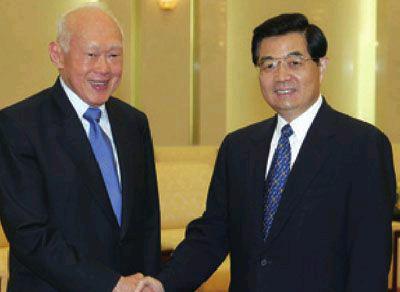Lee Kuan Yew’s China Connections
2015-05-22ByYuLintao
By+Yu+Lintao
Singapores founding father Lee Kuan Yew died on March 23 at the age of 91, triggering an outpouring of grief from its citizens and many others around the world. Under Lees leadership, Singapore made a stunning transformation from a poor island country to one of the most developed nations within just one generation.
The rapid development of Singapore is well connected with its governance model which was mainly created by Lee—known today as “the Singapore model.” The political model draws on Western political systems without merely copying them. Despite being underplayed by some Western theorists as pseudo-democracy, the Singapore model has shown a clear record as a strong governance style. It ensures the Singaporean Governments high efficiency, incorruptibility and vitality which lead the country to attain an economic leap forward.
Lees political model has not only benefited the development of his own country but also become a model for many countries striving to build a first-world economy. The model indicates that the Western way of governance is not the only way leading to a countrys prosperity and its peoples wellbeing.
In a message posted on the website of the State Council of China, Premier Li Keqiang stated that “Mr Lee Kuan Yew had worked together with the pioneering gen- eration of Chinese leaders in opening the gate for the friendly cooperation between China and Singapore … His contributions to the China-Singapore relations and Chinas reform and opening up will surely be marked by history.”
In a message of condolences to Singapores President Tony Tan Keng Yam over the passing away of Lee, Chinese President Xi Jinping hailed Lee as an old friend of the Chinese people and the founder, pioneer and promoter of ChinaSingapore relations.
Lee was regarded as the founder of close Sino-Singaporean relations. He was one of the few world leaders who met with all five of Chinas top leaders and visited China as many as 33 times since his first visit in 1976.
As a visionary politician, Lee seized the momentous opportunity of Chinas reform and opening up, advanced Sino-Singaporean cooperation to promote the further development of his country.
In the early phase of Chinas reform and opening up, Lee helped China attract investment from overseas businessmen in Southeast Asia, and he also made Singaporean participation in and support for Chinas transformation a long-term policy. In the meantime, Lee cemented Singapores position in the global economy alongside Chinas meteoric rise.
Since the establishment of their official relations in 1990, the bilateral trade between China and Singapore grew from $2.83 billion in 1990 to $91.43 billion in 2013. China has become the largest trading partner of Singapore while Singapore is the 11th largest trading partner of China.
Lees proposed Suzhou Industrial Park, the largest cooperative project between China and Singapore, was inaugurated in 1994 in east Chinas Jiangsu Province, creating an icon of China-Singapore cooperation. It has also served as a model for Chinas economic cooperation with other foreign countries.

